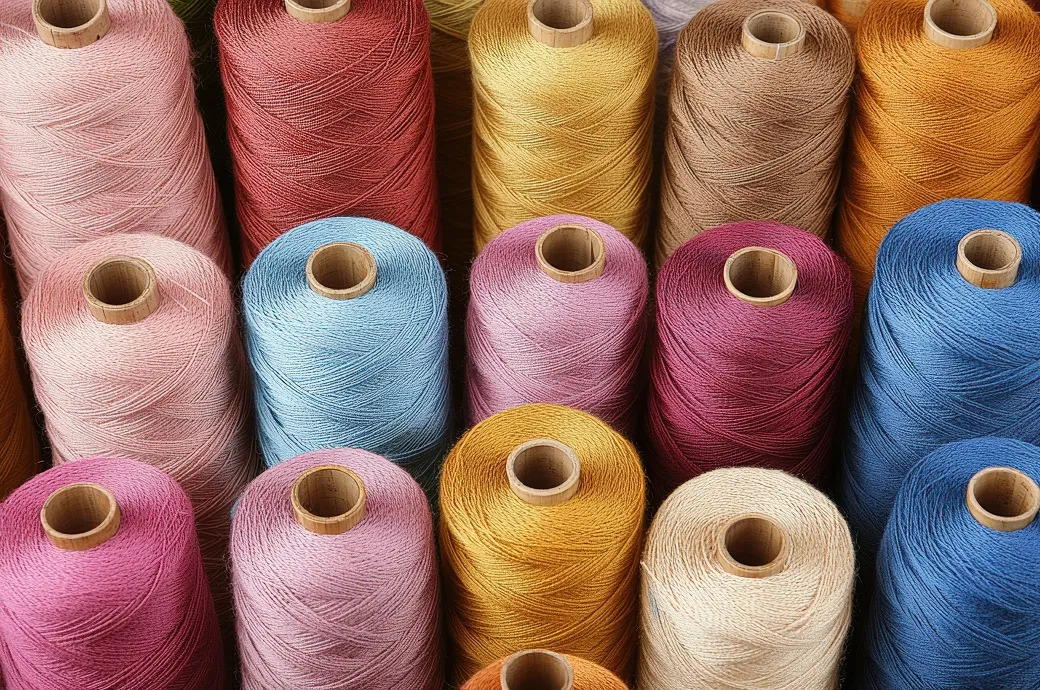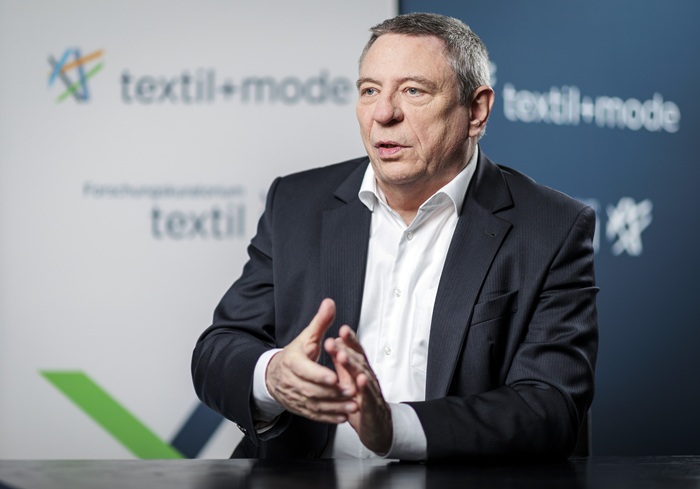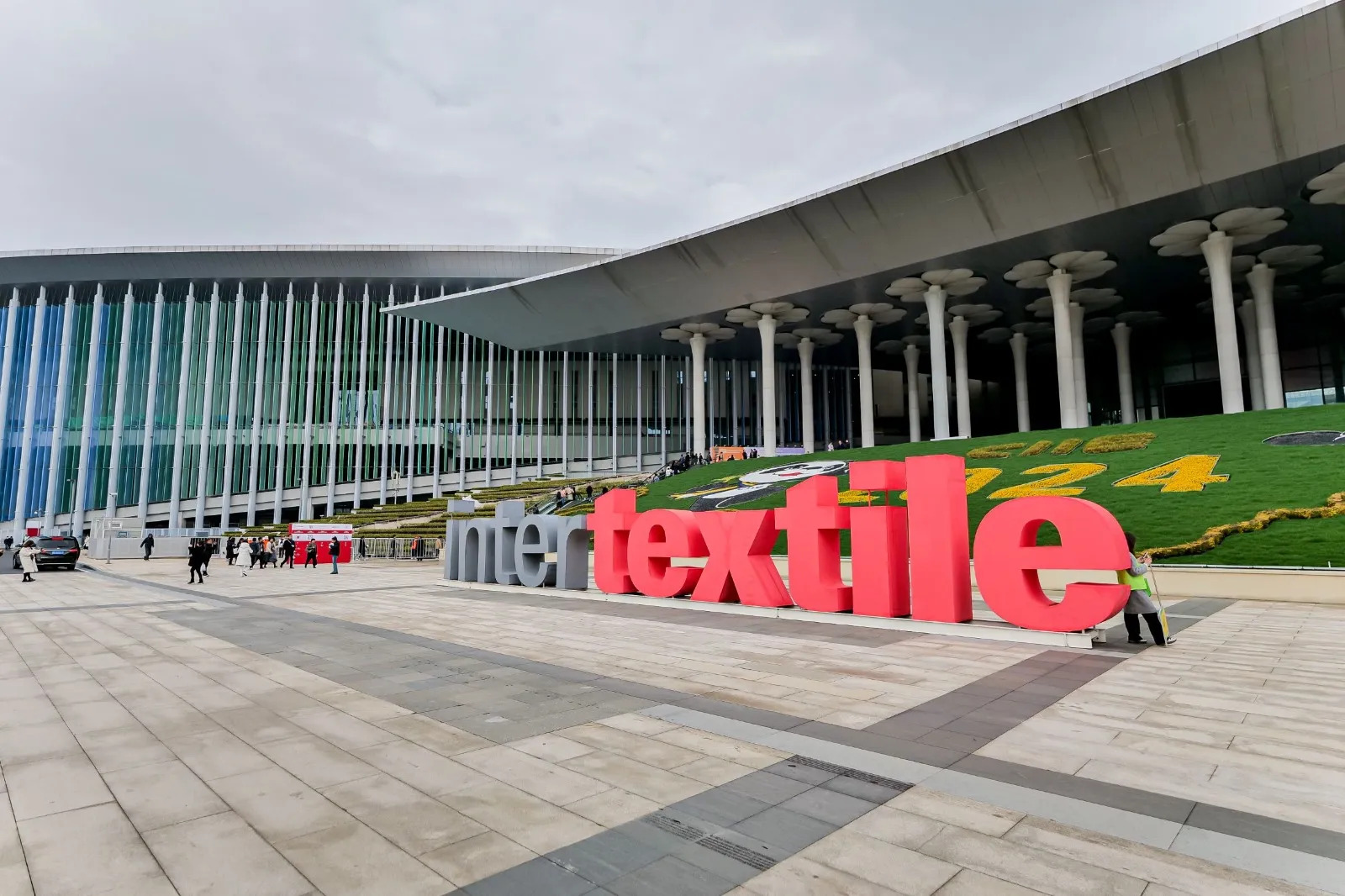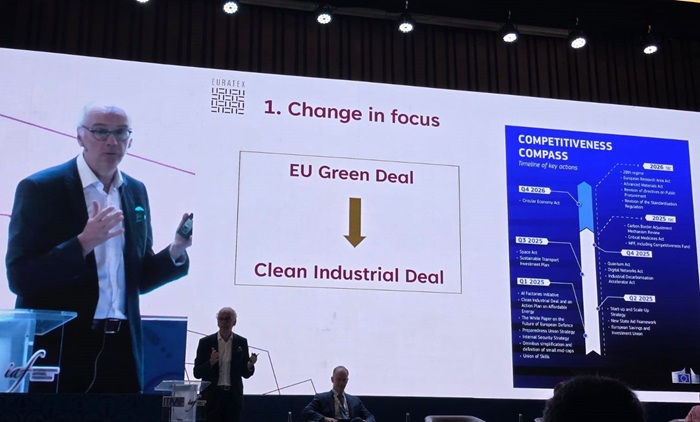FW
Weavers from a tiny village in East Godavari district are posing a challenge to power looms. They are making a fabric, which cannot be made in any other mode, but the handloom. This comes at a time when power looms are affecting the livelihood of artisans who depend on the traditional looms.
A new cotton variety is the artistic blend of ‘Malmal’, ‘Khadi’, and ‘Malkha’, which has remained as a fashion statement for high society women from North India. About three years ago, Malkha known as ‘freedom fabric,’ was introduced to the members of the Pulugurtha Handloom Weavers Cooperative Production and Sale Society located about 30 km from Kakinada. Now, weavers are enjoying the benefits of the new variety that has a great demand in the market.
‘Malkha’ weavers from the village say weaving needs more attention compared to other handloom varieties. However, the returns are comparatively high and there is no dearth of work orders due to the demand, he adds. In 2012, Decentralised Cotton Yarn Trust (DCYT), based out of Hyderabad identified potential weavers from the village and trained them. The machinery for the yarn unit was provided by the government, who spent Rs. 93 lakh for it. The yarn-making unit has a capacity of 35 kg per day and at present it generates 10 kg of yarn every day.
Around 40 weaving families from Machavaram, Someswaram, Pulugurtha, and Kutukuluru have been depending on Malkha for their livelihood by converting their handlooms into Malkha looms and making 1,500 metres to 2,000 metres of fabric a week.
Punjab chief minister Parkash Singh Badal has announced immediate compensation of Rs 10 crores to cotton growers whose crops were extensively damaged by whitefly attack. This compensation is for those growers who have uprooted their crop because of the pest attack. During a meeting with the delegation of Bhartiya Kissan Union (Sidhupur), led by its President, Pishora Singh it was decided by the CM that this compensation would be given immediately. Officials of the revenue department informed Badal about the situation at the meeting. He was notified that out of 11,780 acres area ploughed back by the farmers, 5,000 acres are in Muktsar, 3,727 acres in Fazilka, 2,090 acres in Bathinda, 539 acres in Mansa, 398 acres in Faridkot and 26 acres in Barnala district.
Badal assured cotton growers that they would get proper compensation for the substantial loss incurred by them. The CM asked the revenue department to complete the entire 'Girdawari' (crop loss assessment) in the affected districts of the Malwa belt within next 10 days with reference to the damage caused to the standing cotton crops due to whitefly.
A revival of demand in Europe and US is foreseen by the end of this financial year. And this has prompted Indian textile industry to press the government to create a conducive environment for the sector. As of now, the sector is not sufficiently prepared to meet demands. D K Nair, Secretary General, Confederation of Indian Textile Industry (CITI) says since the global slowdown demand from India’s major markets dipped considerably. However, the US is on revival path. As for Europe, the Greece problem has receded and the economy there is expected to get better in the coming quarters. Thus, the end of the financial year should see textile demand go up substantially.
The textile industry in the country has not been doing well and the present problems affecting cotton and cotton yarn due to changing Chinese import policy has led surplus stocks, which has added to the problems. Lower offtake has forced many spinning mills to have lesser number of shifts and some have even closed down as China is the largest importer of cotton and cotton yarn. Besides, Indians exporters have to pay 16 per cent import duty while shipping to Europe, which is its largest market, in the case of apparels and garments. Competitors, such as Pakistan, Vietnam, Cambodia, meanwhile pay zero per cent duty. If India signs a free trade agreement with Eurozone, Indian exporters would grow significantly. Nair says that industry has been asking the government to move forward on this for some time now.
Malaysia Fashion Week (MFW) 2015, a collaborative effort between Malaysia's national trade promotion agency MATRADE (Malaysia External Trade Development Corporation) and Malaysia's leading fashion event organiser STYLO International will be held from November 4 to 7, 2015 in Kaula Lumpur. The event promises to host ‘ground breaking’ fashion shows featuring designers from over 15 countries, a stylish gala event and a trade exhibition.
MFW connects trade buyers, exhibitors and designers from the ASEAN region and the world, while providing a platform to source and showcase the latest in fashion, accessories, footwear, cosmetics and the likes. The show consists of three core components: Malaysia Fashion Showcase (MFS), Mercedes-Benz STYLO Asia Fashion Week (MBSAFW), FACIT@INTRADE (short for Fashion, Art & Accessories, Cosmetics, Interior and Textile).
The fashion shows for Spring/Summer 2016 will feature Malaysian designers under the MFS banner, together with Asian designers under the MBSAFW banner. MFS unveils Malaysia's best collections and it's a celebration of Malaysia's fashion for the world. MBSAFW will see more than 60 designers from over 15 Asian countries showcase their collection using MFW as its Asian platform. It is a trade fashion event headlined ‘ASIA for ASIA’, which portrays a fusion of Malaysian, Asian and Western influences.
FACIT@INTRADE is the lifestyle component of MATRADE's trade initiative. A successful national and international trade exhibition that has been running for the past eight years, the event is aimed at positioning Malaysia as the region's leading destination for fashion brands, accessories, textiles, cosmetics and personal care.
India is Malaysia's largest trade partner in South Asia with a steady growth of bilateral trade over the last decade at an average rate of 14.6 per cent. This strong relationship between the two nations was further elevated in 2011 with the signing of the Malaysia-India Comprehensive Economic Cooperation Agreement (MICECA), which covers all aspect of trade and investment cooperation between the two countries. As part of the initiatives to boost trade between the two nations, the event has called upon Indian importers and buyers to register under its International Buyer Meeting (IBM) programme, held concurrently with MFW.
www.malaysiafashionweek.my

Intex South Asia, an international textile sourcing show of South Asian region will be held on November 16 and 17, 2015 in Colombo, Sri Lanka. The exhibition brings together textile manufacturers and exporters of yarns, apparel fabrics and clothing accessories from India, Pakistan, Bangladesh, Sri Lanka, China, Korea, Taiwan, Hong Kong and Indonesia.
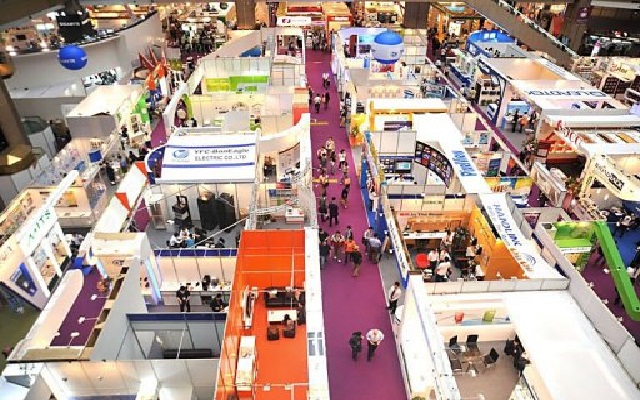
With over 150 leading textile suppliers showcasing their contemporary, trendy and innovative spring/summer collections and targeting buyers from SAARC, GCC, Africa and South Asia region, this exhibition has positioned itself as a focused networking platform for the global apparel market. Intex South Asia is a one-stop sourcing platform to connect with fabric importers, distributors, garment exporters, garment manufacturers, buying houses and buying agents, local and international retail chains, departmental stores, apparel brands, fashion designers and merchandisers.
South Asian markets emerge strong
The global apparel market is estimated at $1,100 billion with trade value of $700 billion. South Asian countries such as India, Bangladesh, Pakistan and Sri Lanka are among the top 10 with the world’s largest textile and apparel exports. South Asia is proving to be a powerhouse for global apparel industry. With a projected high growth rate of 12 per cent every year, India is expected to become one of the biggest markets by 2025. India’s demand for apparel is slated to rise from $65 billion in 2011 to $122 billion by 2017.
Bangladesh is the world’s second largest apparel exporter after China and is expected to cross $50 billion mark by 2020. With 60 per cent apparel exports to Europe and 23 per cent apparel exports to the US, Bangladesh will expand its manufacturing and move up the value chain into lingerie and functional apparel.
Sri Lanka besides its growing value additions in terms of designing, manufacturing, green and ethical manufacturing is also looking to grow its own $2 billion domestic market. With strict compliance to international standards as well as an assured high quality, the ‘Made in Sri Lanka’ label is readily accepted worldwide.
Pakistan is the 8th largest producer of textile products in Asia. With a rise in textiles and clothing exports by 45 per cent over the past five years as well as benefits offered by the EU under the GSP+ duty-free trade scheme, Pakistan is coming out of its dip in manufacturing and exporting activities. The garment and apparel manufacturing hubs are hence, now relocating from the global powerhouse of China to the South Asian markets of Bangladesh, India, Sri Lanka and Pakistan due to reduced labour and logistics cost and increased support from the government.
Sri Lanka, a gateway to the world
Intex South Asia provides the exhibitors and buyers the opportunity to reap the benefits of the booming $67 billion Sri Lankan economy. Strategically located at cross roads of the east and west sea routes Sri Lanka is the point of entry to South Asia and a top clothing producing country in the world. With an expected growth rate of 8.5 per cent, the country has the reputation of being one of the most business friendly nations within the South Asian region.
Being politically neutral and visa friendly, Sri Lanka provides a platform to entrepreneurs from India, Bangladesh, Pakistan Nepal, Bhutan and Maldives to freely do business in an encouraging environment. Good connectivity and regular flights from the EU, Middle East, South and South East Asia, make Sri Lanka an ideal destination to host Intex South Asia.
www.intexfair.com
Vertically integrated knitter Pratibha Syntex has developed a process by which it can reduce its dependence on water by one billion liters a year. It evolved a way to reduce water consumption at its manufacturing facilities and cotton farms. Pratibha increased its use of mélange fabrics, which use substantially less water than conventional dyeing. Other initiatives include: adoption of a new generation of water and energy-efficient dyestuffs, optimisation of its color palette and solid capital infrastructure for effluent treatment.
Pratibha’s blue water footprint has reduced by 53 per cent from 2010-11. It is the first textile manufacturer in India to receive this certification. It has implemented drip irrigation in organic cotton farms, coupled with intensive training to farmers, in water-efficient farming techniques for producing BCI and Fairtrade cotton. One product innovation pioneered by Pratibha uses spun dyed fibers leading to 85 per cent savings in water and 35 per cent less energy use.
The company, which is based in Mumbai and began operations in 1997, currently produces more than 12,000 tons of knitted fabric a year. It also operates more than 3,500 sewing machines enabling it to produce more than 55 million garments a year.
www.pratibhasyntex.com/
Textile mills in Tamil Nadu that make polyester or polyester cotton yarn are exploring new markets and products in an effort to go in for value addition and get better prices for their yarn. As many as 90 textile mills that make synthetic yarn in the state had stopped production for two days a week for four weeks as prices of yarn had dropped and the mills were finding it unviable.
With export orders too declining, the yarn that was for overseas markets was also coming into the domestic market. Some mills that found it difficult to stop production for two days a week went in for a 30 per cent cut in production.
There are positive enquiries now and mills are able to sell some of the stocks. Prices too have improved. Mills have decided that individual units will decide production based on their stock and order book position. Most mills sell the yarn to weaving units in Bhiwandi, Malegaon and Ichalkaranji. Weaving units had reduced production for several reasons for the last few months and are reviving operations only now. So textile mills in Tamil Nadu are hopeful of orders going up in the coming days.
Once loved denim are being pushed out of the closets to make a way for athleisure. Britain's love affair with a pair of denim seems to be more than over as consumers prefer slipping into comfortable yoga pants and jogging bottoms.
The trend of wearing yoga pants is no more restricted to gym, walk or such fitness-related activities but a study finds out that Brits are either ditching their jeans or simply wearing them less often. While young men are sporting branded ‘trackie’ bottoms, women are embracing stretchy leggings. The trend is definitely making an adverse impact on denim makers and sales of denims. World's biggest maker of denim clothes, Levi's in its latest results, witnessed a five per cent fall in its worldwide sales. In fact, a lot of denim brands have begun manufacturing athleisure to cater to today’s audience.
The US-based company said 20 per cent of its sales were now in belts, shirts and other accessories for the first time ever and the split is forecast to be 50-50 within the next few years. In Britain, sales of denim, last year rose by three per cent but is expected to only rise by two per cent a year for the next few years, which is better than a loss but only half the expected growth in other forms of clothing, according to a recent report by analysts Euromonitor.
Euromonitor report said, “The rise of so-called 'athleisure' in the UK apparel industry has had a direct negative influence on sales of jeans as fewer consumers are now interested in wearing jeans as casual day-to-day wear. The rise of 'athleisure' modes of dress has resulted in consumers adopting leggings or sports trousers and running shoes on a daily basis, reducing demand for jeans.”
Picanol a market leader in airjet and rapier weaving machines has introduced two new rapier machines, Opti Max and Terry Max. Opti Max is the fastest industrial rapier weaving machine in the world. Thanks to its innovative design, it is also the most versatile and user-friendly rapier machine with the lowest energy consumption in the market. It can be adapted to a wide range of fabrics, which means that it provides weavers with a great deal of flexibility in reacting to changes in market requirements.
TerryMax is a new machine for weaving terry fabrics that is for the first time available in a rapier format. The new rapier machines will be making their international debuts at the ITMA Milan trade fair for textile machinery that is set to be held in November, where Picanol will be presenting its new technologies.
Picanol weaving machines are a synthesis of technological know-how and experience that has been built up over almost 80 years. There are more than 1,75,000 Picanol weaving machines running in some 2,600 weaving mills worldwide. The company offers a wide variety of machines and services that enable weavers to create every type of fabric imaginable. The machines are energy-efficient, versatile, user-friendly and easy to set.
www.picanol.be/
Karnataka will establish textile parks in every taluka of the state to encourage youths to become entrepreneurs and self-dependent. The state government has also decided to adopt a new policy to help establish small and medium industries by providing 35 per cent financial assistance to the general category, 40 per cent to women and 50 per cent financial assistance to those belonging to the scheduled castes and tribes.
The government will provide power, land, water and other infrastructure including loans from banks and financial institutions at very reasonable rates of interest. The first such park will come up at Holalkere taluka on 20 acres of land. Another 1,000 acres have been allotted for a textile park at Yadgir in north Karnataka. The construction of the textile park, in the most backward region of the state, is likely to improve the condition of cotton growers and weavers besides generating employment for a large number of people.
Karnataka wants industries to move away from the congested Bangalore region. The government is ready to offer incentives to industries willing to move out of Bangalore. Large areas will also be identified for setting up mega textile parks. Each of these mega parks will be on 2,000 to 5,000 acres of land so that foreign direct investment can be attracted.


